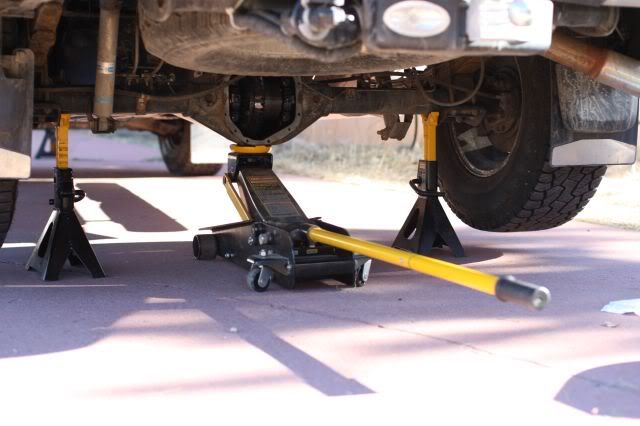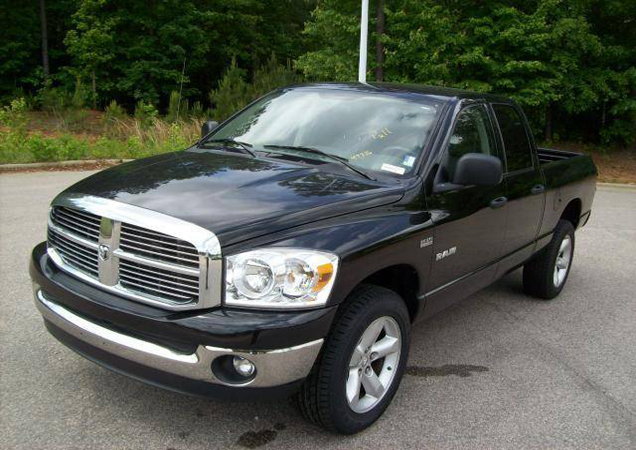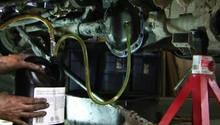Dodge Ram 2002-2008: How to Replace Brake Pads, Calipers, and Rotors
Your Dodge Ram's brakes tend to work a little harder than most average vehicles. You want to make sure the brakes are fresh so it can keep working just as hard.
This article applies to the Dodge Ram (2002-2008).
The brakes on your Dodge Ram tend to take quite a beating. This is in part due to the fact that trucks usually work a bit more than most other vehicles. They are also usually used a bit harder and rougher than most other vehicles. Just these two factors alone can take a toll on your truck's brakes. A truck's brakes should definitely be inspected more frequently than most other cars for optimum performance. You're in luck because a truck's braking system is quite simple, and a person with a basic knowledge of the brake system can perform a general service, such as a pad and rotor change, and if you're even more mechanically inclined, you can perform a caliper replacement.
In this article, we'll go over a basic procedure on how to change out brake pads, rotors, and calipers so you get an idea of what it might take.
One of the good things about having to change out your pads and rotors is that it gives you a good opportunity to possibly upgrade them. There are a few companies out there that offer a number of different choices for pads and rotors so that you can match them to what exactly your application is. Keep this in mind when shopping for new pads and rotors.

Materials Needed
- Jack
- Jack stands
- Millimeter socket set sizes 12mm-22mm
- Standard socket set sizes 7/16"-7/8"
- Ratchet
- Millimeter wrenches sizes 10mm-15mm
- Brake bleeder (vacuum, power, willing assistant)
- Large C-clamp
- Brake system safe grease
- Mallet
Before beginning, remember that brake pads must be changed in pairs. For example, if you change the fronts, both sides must be replaced at the same time. This applies to the rear as well, if you change the rear pads, both sides must be changed at the same time. Failure to do this could result in uneven braking, which could lead to loss of control or poor braking.
Step 1 – Elevate the vehicle off the ground
Loosen the lug nuts on the wheels before jacking up the truck. With the vehicle on level ground, raise the truck and secure it on jack stands.

(Related Article: How to Jack Up Your Truck - DodgeForum.com)
Step 2 – Remove wheels
Now that the vehicle is elevated, you can remove the wheels where you will be changing the brakes.

Step 3 – Depress piston on caliper
Before removing anything, it's a good idea to depress the piston of the brake caliper into its bore. This will make room for the new pads and thicker new rotors once it is time to install them. This can be done using a large C-clamp. Place the C-clamp on the brake caliper and depress it. Perform this slowly while checking the master cylinder reservoir fluid level to make sure it doesn't overflow. If you are installing new calipers, this is not necessary, as your new calipers should already have the piston depressed.

Step 4 – Wash down brakes
Now that you have the caliper's piston depressed, it is a good idea to wash down the brakes with brake cleaner. This will allow everything to loosen up. It will also allow you to work with clean components.

Step 5 – Remove brake caliper
The brake caliper is held onto the brake caliper bracket by two bolts located on the backside of the caliper. Loosening these bolts will allow you to remove the brake caliper by sliding it up and out of the way. If you are not going to be replacing the caliper, you will want to hang it on the coil spring or anything similar so it doesn't get in the way. Do not let the caliper hang freely off the brake line. This could damage the rubber brake line causing brake failure.

Figure 5. Caliper mounting bolts. 
Figure 6. Remove the caliper
Step 6 – Loosen banjo bolt on caliper (only if replacing brake caliper)
To completely remove the caliper, you will need to loosen the banjo bolt that secures the rubber brake line to the caliper (Figure 7). This will be the only thing keeping it attached to the vehicle at this time. When you loosen this bolt, brake fluid will leak out, so be prepared to catch it with a suitable container. Loosening this bolt will also require you to bleed the brake system as you will be allowing air to enter the line, so only loosen this bolt if it's absolutely necessary.

Step 7 – Remove brake pads
Now that the caliper is either out of the way or removed, you can remove the pads from the caliper's mounting bracket. These pads sit inside grooves in the mounting bracket and to get them out, just slide them away from the bracket. You will notice that once you have them removed, there are separate pieces of metal that were sitting in between the pad and the caliper mounting bracket grooves. These are anti-rattle clips. You will want to discard these if they look worn and replace them with new ones. Most new pads come with new anti-rattle clips. Either way, if you keep or replace them, you will want to apply some grease to them to help the pads slide easily in them.

Figure 8. Remove the brake pads. 
Figure 9. Apply grease to the anti-rattle clips.
Step 8 – Remove brake rotor
Now that you have the pads and caliper removed and out of the way, you can remove the brake rotor. The only thing keeping it from being removed at this point is the brake caliper's mounting bracket. There are two bolts that hold this bracket onto the steering knuckle. Once these are removed, you can remove the caliper mounting bracket, and finally remove the brake rotor. The brake rotor might take a few taps with a mallet to remove it.

Step 9 – Install New Brake Parts
Installation is the reverse of removal.
- Install new brake rotor.
- Install brake caliper mounting bracket and bolts.
- Install anti-rattle clips.
- Install brake pads.
- Attach brake caliper banjo bolt (if removed to install new caliper).
- Slide caliper into place over brake pads.
- Install bolts that secure caliper to caliper mounting bracket.
- Bleed brakes (If brake line was loosened).
- Install wheels.
- Place vehicle back on ground.
- Before driving vehicle, make sure to pump the brakes to allow the piston in the caliper to seat against the new brake pads.
- Test drive.

Related Discussion
- Brake Rotor Replacement Procedure - Dodgeforum.com






